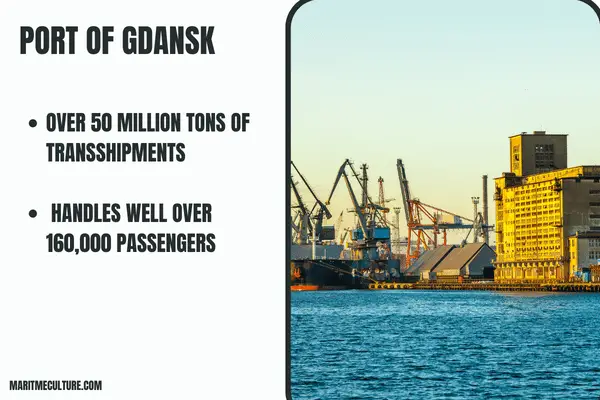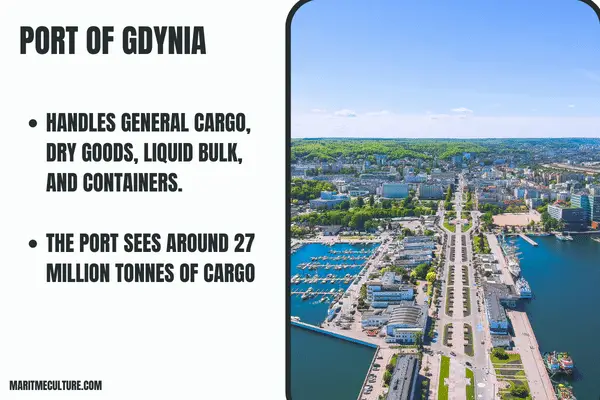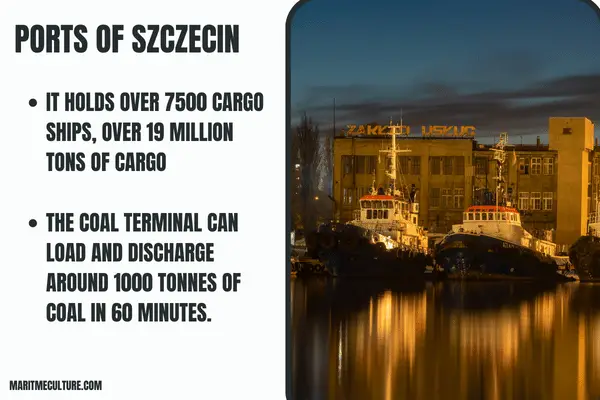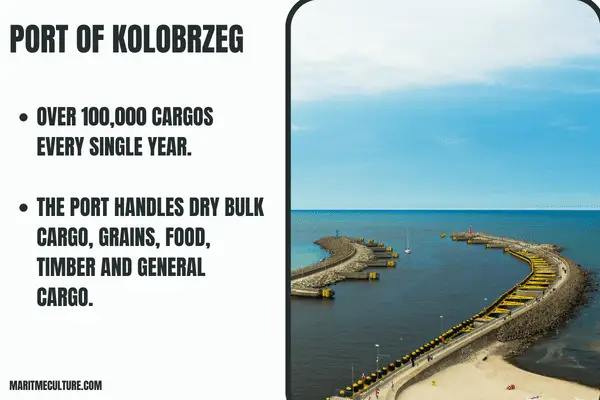There is a certain appeal to the ports as they are home of fishing boats, yachts, passenger ships, and many other sea vehicles that provide an excellent outlook to the city. In the highly developed shipping sector, Poland handles most of its foreign trade compared to other methods. The 770 km long coastline covers major and minor seaports to facilitate various trading.
The shipping sector of Poland is highly developed and handles the majority of foreign trade in the country. The government of Poland operates all the ports in Poland. They provide a safe and efficient system for securities trading in the ports. All the Poland ports have shipping connections to other countries. The managing, exploiting, and maintenance of the shipping line and Poland ports falls in the hands of the authority of Poland.
Each one of the ports in Poland is located in a unique location and has quite a bit of history behind them. But most of them now function as a trade route to other countries to export goods. The gross tonnage has been rising over the years as the demand for goods has increased.
This article will cover Poland’s biggest ports with all the informative details. Here you will find some basic information about the port and what makes them unique.
Page Contents
1.Port of Gdansk

Basic Information
- Operated by – Gdańsk Seaport Authority
- Owned by – Poland Government
- Annual Cargo tonnage – 49.032 million tons in the year 2018
Located on the coast of Gdansk bay, it is one of the largest seaports in the Baltic Sea. In 2018, the seaport handled 49 million tons of transshipments. Compared to 1978, when the port managed to get out 2.8 million tons, we can see how far the port has come in terms of usefulness.
The vastness of the port results in creating two separate operational areas within the same port. One of them is the outer harbour that homes the giant ships through the danish straits.
Highlights of the Gdansk port
- Port of Gdansk handles well over 50 million tons of transshipments, and the number will increase in coming years as the demand for products reaches high numbers.
- The port also handles well over 160,000 passengers. The number doesn’t show any sign of stoppage.
- Local industries rely on the port of Gdansk to import the amber resin to other countries.
- The layout of the quays of the Port of Gdansk is a benefit, as it offers to the terminals the possibility to handle grain, Roro, coal, Fertilizers, LPG, and ores.
- It connects to some of the biggest ports, such as Hong Kong, Shanghai, Russia, and Germany.
2.Port of Gdynia

Basic Information
- Opened – 1926
- Operated by – Port of Gdynia Authority
- Owned by – City of Gdynia
- Annual Cargo tonnage – 849,123 in the year 2014
It is found in northern Poland on the northwestern coast of Gdansk bay and is regarded as the largest seaport in the county. Add this port to your list if you want to go on a tourist adventure. It is also home to the Polish navy.
The port covers around 973 hectares of area, parking lots, storage facilities, and port operations cover 300 hectares. The Port of Gdynia is the principal seaport of Poland.
Highlights Port of Gdynia
- The entire port does not witness any tidal variations because of the breakwaters.
- The facility handles general cargo, dry goods, liquid bulk, and containers.
- Major commodities include grains, coals, automobiles, iron ore, sugar, lumber, and other food products.
- Generally, the port sees around 27 million tonnes of cargo according to the data published in the year 2020; in future, we will see a rise in that number.
- Terminals have their own jobs, and container terminals handle around 2 to 4 million TEUs annually.
- Liquid Bulk terminals handle ammonium nitrate and receive fuel oil shipments.
- Bulk Terminals handle ammonium sulfate and fertilizer imports.
- And lastly, the General cargo terminal takes care of steel products and bagged cargo such as rice, coffee, cocoa, and heavy goods.
3.Ports of Szczecin

Basic Information
- Opened – Middle ages
- Operated by – Szczecin and Świnoujście Seaports Authority
- Owned by – Poland Government
- Annual Cargo tonnage – 9.965 million tons in the year 2006
The port connects to berlin and Europe’s highway network and links Russia and Finland with western European countries. The strategic location makes the port perfect for handling a variety of goods.
Highlights Ports of Szczecin
- Port of Szczecin partners contains Scandinavian countries, Germany, the UK, China, and West African nations.
- It is also the deep water harbour in Szczecin.
- It holds over 7500 cargo ships, over 19 million tons of cargo, and 60 passengers get handled annually.
- The connection of the port has made it vestibule on the item exportation. It handles coal, coke, grain, iron, ore, scrap iron, timber, cement, salt, sugar, and containers. The list goes on as the port also takes care of wood pulp, steel, liquid bulk, paper, and tar.
- The coal terminal can load and discharge around 1000 tonnes of coal in 60 minutes.
4.Port of Świnoujście

Basic Information
- Operated by – Szczecin and Świnoujście Seaports Authority
- Owned by – Poland Government
- Annual Cargo tonnage – 9.24 million tons in the year 2006
The port of Świnoujście is located on the eastern shores of Uznam island. The port is considered to be a major fishing port and a resort. Here are the highlights of the port.
Highlights of Port of Świnoujście
- This port of Świnoujście handles coal, iron ore, and fertilizers.
- Over 3000 ships pass through the port every single year.
- The port saw 33.2 million tonnes of cargo in 2021; compared to the previous year, it was an 8.2% growth.
- Every 24 hours, the coal terminals load up to 3000 tonnes.
- The iron terminal handles the iron ore shipment. The liquid bulk terminal deals with transferring liquid tar pitch.
- The ferry terminal handles passenger, train and ferry services to countries such as Denmark, Sweden, and Copenhagen.
5.Port of Kolobrzeg

Basic Information
- Opened – middle ages
- Operated by – Polish Navy
- Annual Cargo tonnage – 157,000 in the year 2006
Port of Kolobrzeg is known for its commercial sector in the country, located on the eastern part of River Parseta. Here are some of the notable features of the Port of Kolobrzeg. The history of the port dates back to the middle ages.
Highlights Port of Kolobrzeg
- It handles more than thousands of vessels, over 100,000 cargos every single year.
- Now Kolobrzeg acts as a trade town offering resorts and other services to people.
- The port handles dry bulk cargo, grains, food, timber and general cargo.
- The lighthouse here was built after World War II. It stands 20 meters close to the sea.
Conclusion
These were the biggest seaports in Poland, as they handled the majority of the foreign trade done in the country. The government handles the proper maintenance of these ports, and the city ensures everything runs in a timed order without taking any disturbance to the workflow.
